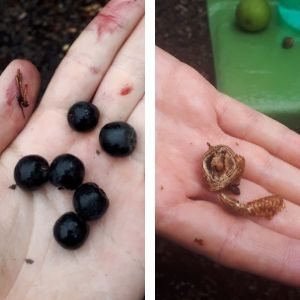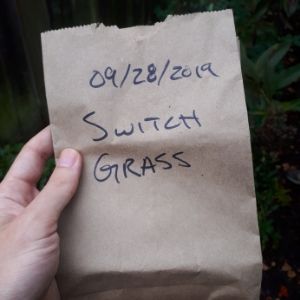
If you plan on harvesting seeds in your own backyard you can disregard this step. However, even for public spaces, such as parks, permission is needed before you can begin harvesting seeds.
Wait for seeds to ripen before harvesting:
This is often when the fruits have fully ripened or the flower heads and stems have browned. Once the seeds are ready, you can remove them by clipping off the flower heads or fruits and storing them in a paper bag. Fleshy seeds (like those in berries) will need to be removed from the fruit and stored in a paper bag in the refrigerator. Dry seeds (those without a fleshy fruit) can stay in a paper bag and stored in a cool, dry area.
Only harvest seeds from healthy plants:
Plants that are discoloured, defoliated or diseased may not provide viable seeds. Targeting the healthiest plants offers the best chances of germination the following spring.
Only harvest 10%:
While it is tempting to collect as many seeds as possible, it is crucial that we leave enough seeds to sustain natural propagation and provide food for local wildlife. One of the reasons we love gardening with native plant species is to support local biodiversity, so harvesting sustainably is the way to go. The rule of “green” thumb is that you don’t want to harvest more than 10% of the seeds from each species. Trust us – 10% is plenty to enhance your native plant garden!
Keep it organized:
One of the most important things you can do is to document the seeds that you are collecting. Many of the seeds are so small it is nearly impossible to tell species apart. Keep the seeds from each species in separate paper bags and label them with the species name, date harvested and location. This way you can keep track of your seed collection as it grows!

Timing is everything:
The best time to sow your seeds is often in the fall so that the cool, damp weather will help the seeds germinate for the following spring. However, optimal storing and planting conditions change depending on the species. Databases like the one from the North American Native Plant Society are a great resource for finding out exactly what your seeds need to successfully grow!
Whether you’re looking to expand your own native plant garden, collect food or share seeds with friends and family, seed harvesting is an amazing way to enjoy the urban forest well into autumn. Happy harvesting!
If you’re looking to plant native trees or shrubs on your property make sure to check out LEAF’s Backyard Tree Planting Program. If you would like to get involved as a Garden Steward in our Urban Forest Demonstration Gardens, you can sign up to become a volunteer.
Brian Millward is the Stewardship Coordinator at LEAF. He holds a Masters of Environmental and Life Sciences from Trent University
LEAF’s Urban Forest Demonstration Gardens are supported by Ontario Power Generation and the Toronto Transit Commission.
